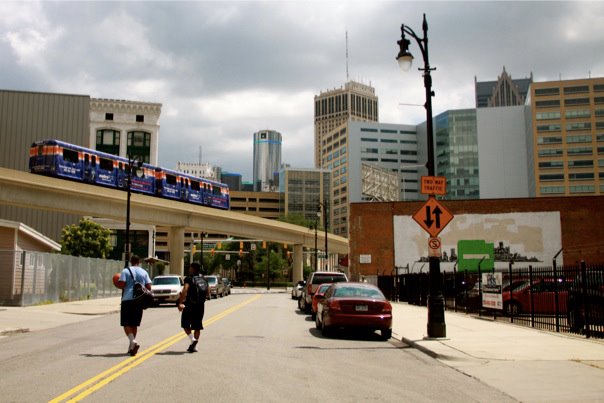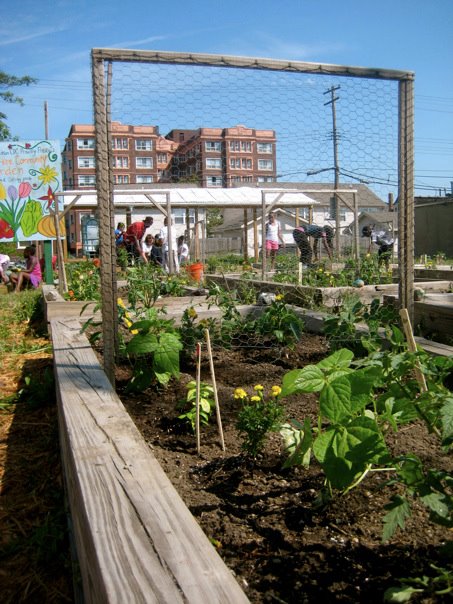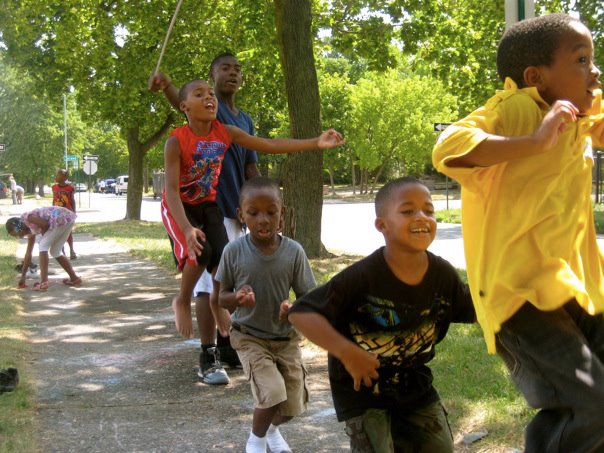There’s been a lot of talk about Detroit lately. Whether you’ve been diligently following the bankruptcy proceedings or merely heard mention of them on the news, you’re getting the idea that the city is a screwed up, deserted place with no hope of recovering from the pull-out of automotive manufacturers—except perhaps through the saving hand of hipster gentrification. Actually, Detroit’s population, like that of numerous cities around the country, has been declining since the boom time of World War II and its bankruptcy is merely a final straw. But more importantly, I want to clear some things up about Detroit from an insider’s perspective; not my own, but my cousin’s.
She spent the past two summers living and working in Detroit. On the ground, she’s seen what lies beyond the abandoned buildings, drained pension funds and devastating unemployment: a community of people who are struggling—yes—but very much present and engaged. My cousin teaches at a summer camp that provides activity and support for children who might not otherwise have a place to go during the summer. This is just one example of the ways that residents come together to uplift their city. Other examples come in the form of numerous community gardens sprouting up around Detroit, small businesses that have persisted for decades, and neighbors joining together to assert their continued livelihood in a place that many Americans have written off completely. My cousin feels safe in her neighborhood at night. She has never been mugged or threatened. She shops at the local stores and she talks to her neighbors.
Richard Florida explained in a recent article entitled “Don’t Let Bankruptcy Fool You: Detroit’s Not Dead”, the “broader metropolitan region is home to huge assets” including research universities, an international airport, and serious creative talent. While many of these assets exist outside of the city proper, Florida suggests that regional cooperation will make significant strides in solving Detroit’s downturn. He also states that the people truly working to restore Detroit are not deterred by the doomsday label of “bankruptcy.” Beyond that, new residents are moving into the city, and while some of them are merely taking advantage of cheap real estate in order to build insular districts—others are actively integrating into existing neighborhoods and listening to the needs of citizens. Each of these elements—regional cooperation, grassroots restoration and new development—requires eyes that are open to the real story of Detroit, not blinded by the negative portrait painted by outsiders.
This argument goes beyond Detroit though. It’s about changing the tone of our dialogue from pessimistic disregard to positive construction. Like so many American cities, Detroit is struggling under the weight of recession, racism, and the immense concentration of wealth in our nation. But it is not just a convenient test-subject that exists to teach the rest of America what happens when a city goes bankrupt. The same goes for the neighborhoods and cities we have labeled in conversation as “crime-ridden,” “failing” or “poor” all across the country. Please know that when you speak about a place, you are speaking about real people who call that place their home.
All photos taken by Anna Monkmeyer in Detroit, MI.




Pingback: Interview: Anna’s Word on Detroit | The City Space
Pingback: Baltimore Beyond The Wire | The City Space